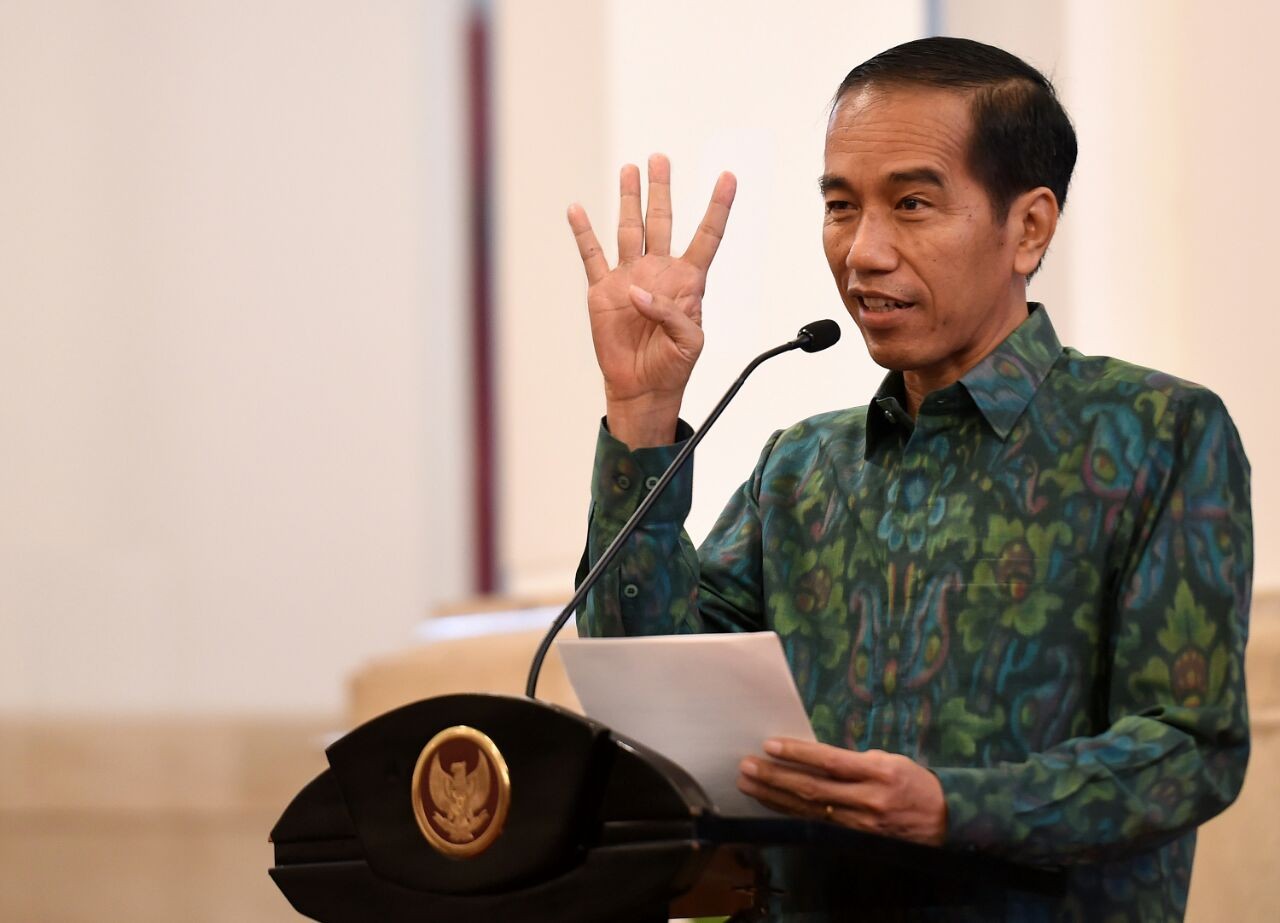Popular Reads
Top Results
Can't find what you're looking for?
View all search resultsPopular Reads
Top Results
Can't find what you're looking for?
View all search resultsWhy Jokowi-Kalla cannot meet debt promise
The ratio of the government debt to gross domestic product (GDP) meanwhile rose from 14 percent to 17 percent. What are the reasons behind this increase in government foreign debt?
Change text size
Gift Premium Articles
to Anyone
O
ne of the most popular promises made by President Joko “Jokowi” Widodo and Vice President Jusuf Kalla during their 2014 presidential campaign was to lessen Indonesia’s reliance on foreign debt.
However, according to the latest data, the government’s foreign debt reached US$146.16 billion in March. In October 2014, when Jokowi-Kalla were installed as President and Vice President, respectively, the government foreign debt was about $126.55 billion. In the period between October 2014 and March 2016, then, the government foreign debt rose by $19.6 billion, or 15.49 percent.
The perception of foreign debt in emerging economies in the 1980s was generally positive since such borrowing helped to improve the economies of many countries, such as South Korea, Taiwan, Singapore and Hong Kong.
However, some countries in Africa, Latin America and South Asia unfortunately failed to maximize the foreign debts and instead fell into a debt trap as a result of problems such as corruption and poor governance.
Indonesia’s debt per capita in 2015 reached $1,119, rising from $660 in 2010. Some government debt indicators have deteriorated because both exports and foreign reserves (a source of debt funding) have continued to decline.
The ratio of government foreign debt to foreign reserves rose from 115 percent in the fourth quarter of 2014 to 140 percent in the first quarter of 2016. In the same period, the ratio of the government’s foreign debts to exports also rose, from 61 percent to 84 percent.
The ratio of the government debt to gross domestic product (GDP) meanwhile rose from 14 percent to 17 percent.
What are the reasons behind this increase in government foreign debt?
The first factor is the government’s promise to ensure economic growth at an average of 7 percent for 2015 to 2019. With the GDP growth target, poverty is expected to decline to 4-5 percent from 11.22 percent in September 2015, and the unemployment rate is expected to fall to 5 percent by the end of 2019 from 5.5 percent in February this year.
The government also plans to increase its role in the economy to at least 10 percent of GDP from 7 percent currently.
In its attempts to achieve the target, the government has significantly increased state revenues, especially from taxes. In 2015, tax revenue was expected to reach Rp 1.48 quadrillion, increasing almost 30 percent from the previous year.
In the period between 2010 and 2014, tax revenue increased by an average of 12 percent annually. Even if the government wants to achieve economic growth of 7 percent, the tax revenue target is too ambitious. It is clear that government wants to increase tax revenue in order to reduce debts in financing the budget.
Unfortunately neither internal nor external economies are as good as expected. With economic growth at below 5 percent, tax buoyancy remains low.
Tax buoyancy (elasticity of tax revenue to economic growth) in emerging economies is generally between 1.5 percent 2 percent. But in Indonesia, tax buoyancy is lower at 1.2 percent.
Moreover, with the 2015 economic growth target of 5.7 percent, the tax revenue growth could be in the range of 10-15 percent, but the government has put it at 30 percent.
Second, as a result of the global economic slowdown, the government revenues are behind target. Decline in foreign reserves was caused by a fall in the prices of and demand for Indonesia’s exports.
Between January and April this year, the value of total exports dropped by 13 percent from the same period last year. Oil and gas exports declined by 39 percent and non-oil and gas exports plunged 9 percent.
Based on destinations, exports to Malaysia declined 13 percent, Thailand 10 percent, the Netherlands 24 percent, Italy 21 percent, India 29 percent and Taiwan 37 percent.
Prices of Indonesia’s commodities also declined sharply. Prices of oil and gas have dropped by 33.27 percent. Fortunately, prices of non-oil and gas commodities increased moderately at 3.78 percent.
Third, the realization of state revenues was slower than expenditure. In the period between January and April, realized revenues totaled only Rp 386.3 trillion ( 21.2 percent of the target), while realized expenditure totaled Rp 544.8 trillion ( 26 percent of the target).
The budget suffered a deficit of about Rp 158.2 trillion. The government raised debt of $7.8 billion during January to March to plug this deficit.
The accumulation of government debt is caused by deficit financing. However, besides creating debt, to cover the deficit, the government still has at two tools at its disposal, namely asset sales (privatization) and money printing. But those options are rarely taken. Raising foreign debt is a common tool in every single country.
But it is crucial to note that increasing foreign debt can cause structural problems, for example primary balance deficit.
Primary balance deficit means that the revenue budget is not able to fulfill interest debt payments, meaning the government needs to raise new debts to pay it. Primary balance deficit in Indonesia rose form Rp 52 trillion in 2012 to Rp 98 trillion in 2013. In 2015, primary balance deficit hit Rp 136 trillion while in the revised 2016 state budget, the amount reached Rp 313 trillion.
In 2015, interest debt payments reached Rp 156 trillion, contributing almost 9 percent of the government budget, while in the revised 2016 state budget, the amount was Rp 191.7 trillion (about 11 percent).
With the increase in debt payments, the allocation to the productive sector becomes more limited.
***
The writer is a researcher at the Institute for Development of Economics and Finance (Indef).
---------------
We are looking for information, opinions, and in-depth analysis from experts or scholars in a variety of fields. We choose articles based on facts or opinions about general news, as well as quality analysis and commentary about Indonesia or international events. Send your piece to community@jakpost.com.










